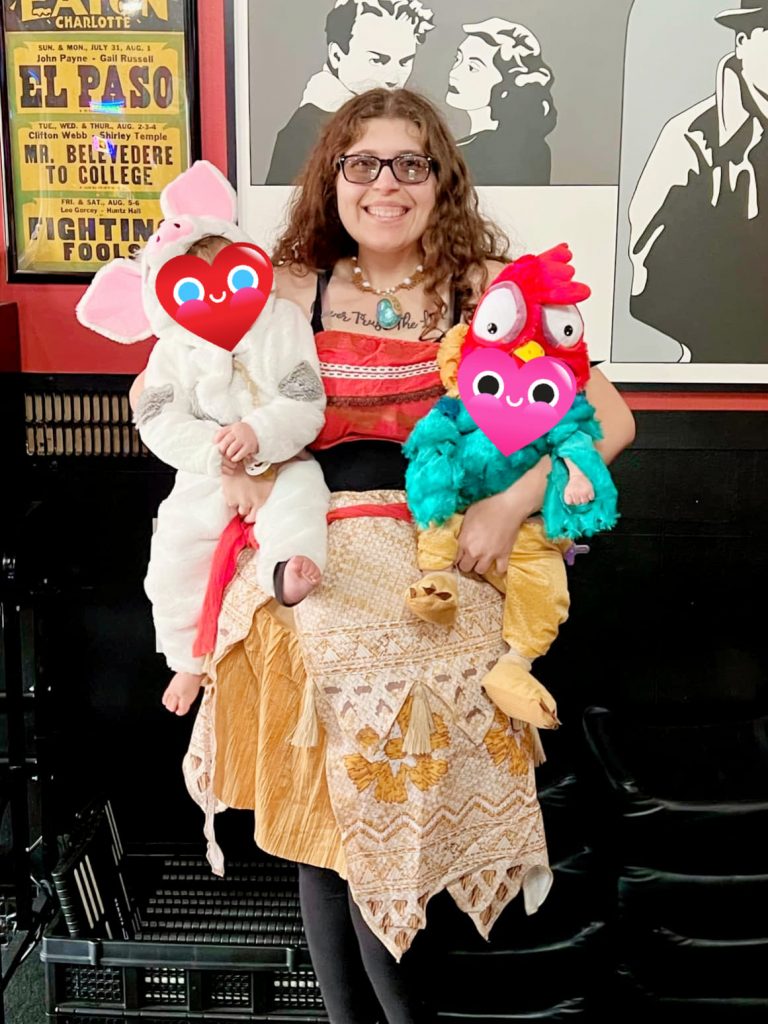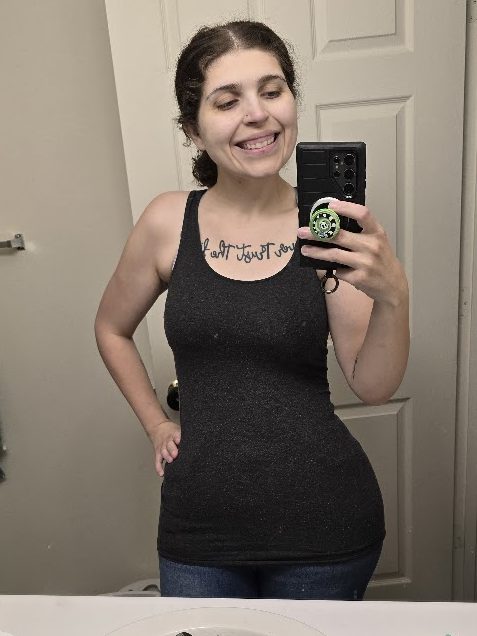Your cart is currently empty!
The Sign I Couldn’t Ignore
In 2019, I finally decided to take control of my weight—really take control. I had tried counting calories. I had tried Tabata classes that left me breathless in all the wrong ways. Nothing stuck.
Our doctor had recommended bariatric surgery before, but it wasn’t until my ex-husband’s coworker began the process—and his stepmom shared her own experience—that it felt like more than a suggestion. It felt like a sign. A nudge from the universe that said: it’s time. ✨
So I listened.
Sleeve, Not Bypass
At my consultation, the bariatric specialist explained the two primary options: Roux-en-Y gastric bypass and the gastric sleeve.
- Roux-en-Y involves rerouting part of the small intestine and creating a smaller stomach pouch. It’s effective, but more invasive and comes with greater risk of long-term complications.
- Gastric sleeve (sleeve gastrectomy) removes about 80% of the stomach, reducing its size and limiting food intake, while leaving the intestines intact. Simpler. Slightly safer. Still life-changing.
I chose the sleeve.
Of course, insurance made me jump through hoops first: a 6-month supervised weight loss program, nutrition classes, exercise routines, therapy sessions—and a 10-pound loss on my own. I managed to check most of those boxes just before the world shut down in 2020. 🌍

Life After Surgery
Surgery day finally arrived in July 2020. I weighed 330 pounds.
Over the next year and a half, I committed to the post-op lifestyle—and it paid off. I dropped to 180 pounds, a number I hadn’t seen in over a decade.

But life doesn’t wait for you to feel stable.
A miscarriage.
A divorce.
Two pregnancies.
Grief doesn’t care about your macros. Stress doesn’t track your progress. The reel kept rolling, whether I was ready for the next scene or not. Slowly, the weight crept back. I hit 220. It was disheartening—but not the end of the story. 🛤️

Zepbound and a Second Wind
Enter Zepbound, a GLP-1 medication (glucagon-like peptide-1 receptor agonist) that helps regulate hunger and insulin response. Not magic—but momentum. With it, and a renewed sense of self, I found my way back to 180.
The Skin I Shed
Then came something that changed more than just my shape: a panniculectomy.
For those unfamiliar, a panniculectomy is a surgical procedure that removes the pannus—the apron of excess skin that hangs from the lower abdomen after significant weight loss. It’s often confused with a tummy tuck, but unlike the cosmetic version, this one is medically necessary.
For me, it was more than medical. It was ritual. A cutting away of what no longer served me. I didn’t just feel lighter. I felt unbound—like I’d shed a cursed cloak that had been stitched to me for years. For the first time in forever, I wasn’t just smaller. I was mine. 🕊️

Choosing Myself
This journey hasn’t been linear. It hasn’t been perfect. But it’s mine.
And it’s taught me something I wish I’d known sooner:
Weight loss isn’t just about pounds or clothing sizes or surgeries.
It’s about reclaiming your power—especially when the world keeps trying to knock it out of you. 🖤
If you’re on this path—or even just thinking about it—know this:
It’s okay to stumble.
It’s okay to fall.
What matters most is that you keep choosing yourself.
Every. Single. Day. 💪
References
- UCLA Health. (n.d.). Gastric sleeve surgery (gastrectomy). UCLA Health. Retrieved August 23, 2025, from https://www.uclahealth.org/medical-services/surgery/bariatrics/gastric-sleeve
- Avidan, R., Abu-Abeid, S., Vons, C., Goitein, D., & Sakran, N. (2022). Ten-year results of laparoscopic sleeve gastrectomy. Journal of Eating Disorders, 10(3). https://doi.org/10.1186/s40337-021-00510-7
- Wikipedia contributors. (n.d.). Tirzepatide. In Wikipedia. Retrieved August 23, 2025, from https://en.wikipedia.org/wiki/Tirzepatide
- Medical News Today. (2023, November 14). Zepbound explained: New GLP-1 weight-loss drug approved by FDA. Retrieved August 23, 2025, from https://www.medicalnewstoday.com/articles/zepbound-explained-glp-1-weight-loss-drug-fda-approval

Leave a Reply